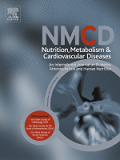
Authors: F. De Meneck, L. Victorino de Souza, V. Oliveira, M.C. do Franco.
Abstract
Background and aims
Irisin is involved in the compensatory mechanisms for metabolic regulation and appears to be associated with glucose homeostasis and lipid profile. However, it's possible implications on obesity-associated cardiometabolic complications have not been completely elucidated. This study aimed to investigate the association between irisin level and anthropometric data, metabolic parameters, blood pressure, and endothelial progenitor cells (EPCs) level among children with overweight/obesity.
Methods and results
This study included 24 children with overweight/obesity (9 girls and 15 boys) and 63 children with normal weight (25 girls and 38 boys). The anthropometric data, blood pressure, blood biochemistry, EPCs and irisin levels were evaluated. Children with overweight/obesity had significantly higher circulating irisin and EPCs levels than those with normal weight (P < 0.001). Additionally, we found that irisin level was positively correlated with BMI (rho = 0.407), waist circumference (rho = 0.449), triglycerides (rho = .334), glucose (rho = 0.226), insulin (rho = 0.533), HOMA (rho = 0.545), and negatively correlated with HDL cholesterol level (rho = −0.218). Importantly, we also found that irisin levels were significantly correlated with systolic (rho = 0.420), diastolic (rho = 0.331) blood pressure and circulating EPCs level (rho = 0.391).
Conclusion
Our study provides evidence that overweight/obese children had elevated circulating levels of both irisin and EPCs and address the gap in the literature with regard to the understanding of the implications of irisin on obesity-related cardiometabolic complications among these children and also highlight the possible involvement of irisin regulation on insulin resistance and endothelial function in childhood overweight and obesity.